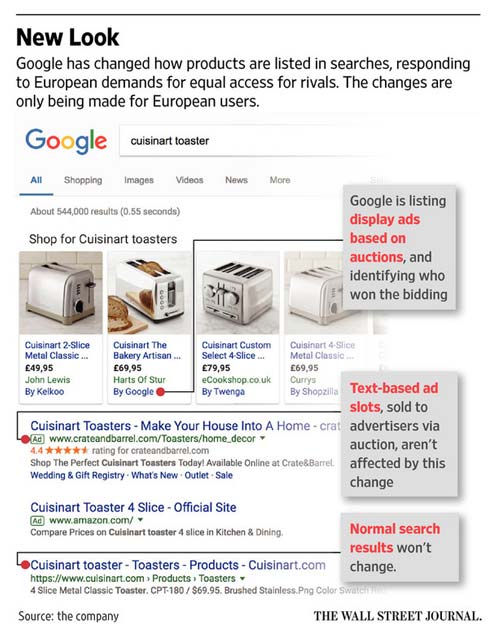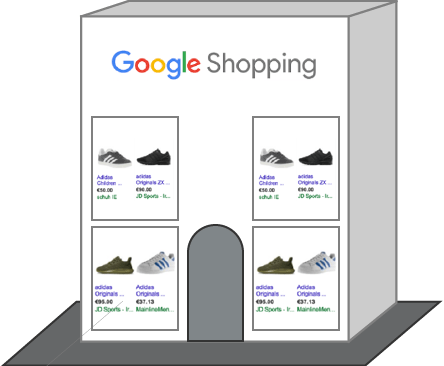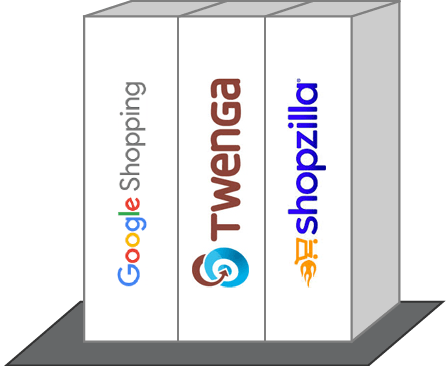Google To Share Advertising Space With Its Shopping Competitors
Look out, those of you who are advertising with Google Shopping; you are about to get new neighbours in the Google “Shop for” search results. These neighbours will come from online comparison marketplaces other than Google Shopping, but they will have visibility equal to that of merchants who advertise through Google Shopping. This will increase the effort needed to advertise successfully on Google Shopping.

In this post, to answer some questions Google Shopping advertisers might have, I will explain how these new neighbours came to get such prime online real estate, what the changes to the “Shop for” search results look like, the consequences this will have on your Google Shopping shop front, and how you can minimize the negative impact of the shrinking of Google Shopping ad space.
Why are non-Google Shopping merchants allowed to appear in the Google “Shop for” search results?
Google needed to become more compliant with EU antitrust laws in order to avoid any further hefty fines, at least while it appeals the record £2.12 billion fine it was dealt by the European Commission in June – punishment for showing only Google Shopping merchants in its “Shop for” search results, which helped increase Google’s search traffic at the expense of other smaller search engines that could not afford to be as competitive.
How will the “Shop for” search results appear compared to before the arrival of these non-Google Shopping merchants?
The “Shop for” search results will include merchants from online marketplaces other than Google Shopping, like Twenga, and the name of the online marketplace will be displayed beneath that of the merchant.

In the intermediary stage between its old look and its new look, Google has introduced the online marketplace names. Compare the old look (top, from January) to the current look (bottom):

What impact will my new non-Google Shopping neighbours have on my shop front?
Imagine a city block in the city of Google Search that used to be entirely occupied by a massive Google Shopping department store.

Now image that same city block now being occupied by multiple department stores, each of the same size; now you can shop at the Google Shopping department store, the Twenga department store, or the Shopzilla department store. The Google Shopping department store has shrunk significantly in size, and now only has one main-street facing window. Getting visibility for your product has suddenly become several times more difficult as shoppers now have more choice.

There isn’t a risk of shoppers going into one department store and not the other, because no one department store is fancier than the other; they appear differently in the search results only in name, and their “Shop for” ads lead users to the merchant, not to their own online marketplace website.
What we should worry about is our visibility in our own marketplace, Google Shopping. In the screenshots of the mobile “Shop for” search results above, we can see that it is still currently possible for any of the advertisers to show 2 of their products in the Google Shopping department store, as the only department store on the block is still Google Shopping. After Google makes the final transition to equality of competition in the “Shop for” search results, then advertisers will only be able to show 1 product at most. The Google Shopping AdWords auction will become much more competitive as merchants vie for that single ad space.
How should I prepare for and take advantage of this?
Merchants with big advertising budgets who previously only advertised through Google Shopping may look to advertise on other platforms in addition to Google Shopping, in order to increase their chances of showing a product more than one department store, and expand their shop front on the Google Search city block.
Merchants with smaller budgets who can only afford to advertise through one marketplace, in our case Google Shopping, will need to:
- optimise their feed as much as possible to be preferred by Google, and
- run smaller more refined campaigns with smaller product bids that show ads for more specific searches.
While bigger-budget merchants juggle visibility on multiple marketplaces, which includes updating multiple feeds, each specific to their own online marketplace, smaller-budget merchants can concentrate on optimising their single feed and on refining their product selection for advertising each season, in order to appear most competitively against rival merchants.
Follow my contributions to the blog to find out more about Google Shopping and Google AdWords, or sign up to the ThoughtShift Guest List, our monthly email, to keep up-to-date on all our blogposts, guides and events.
